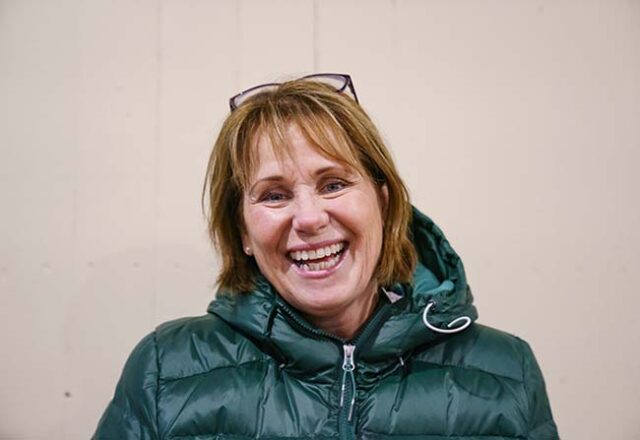
By Kim Lundin
Photography: Kim Lundin
Sweden is currently on top of the sporting world thanks to their recent World Championship glory, yet behind every horse is a modest breeder, who is sometimes female. This story profiles three Swedish ladies successfully representing each of the Olympic disciplines.
Eva Gudmundsson, from Flemminge Gård, south of Stockholm and close to the Baltic sea, is Sweden’s largest and most successful breeder of jumping horses and has a number of approved jumping stallions under her belt. She is a multi-talented woman, a breeding judge, stallion keeper, and has her own breeding station with around 20-25 mares in foal every year. Eva also has a keen eye for international pedigrees, often the first one to sniff-out the new bloodlines, for example breeding with Kashmir van’t Schuttershof long before the Swedish jumping team made ‘wonder horses’ of Kashmir-offspring in Rio 2016 Olympic Games. She is a pathfinder for other breeders in Sweden and in due time her offspring will prove her right.
Nina Sixtensson has been a dressage breeder for more than 20 years, living and working on her farm Dömsta Gård close to Köping, about 150 kms to the west of Stockholm. She is also a crop agronomist and breeds sheep. She produces around seven foals of her own every year, but delivers many more as her stable is a livery yard for mares in foal. Her own-bred Jetset will participate in Ermelo at the WBCYH representing the German Hannoverian association.
Therese Örup is a very successful small-scale eventing breeder who has her second horse in the Swedish team going to a world championship this year. In 2018 she had Box Qutie with Anna Freskgård, and this year it is the son Box Leo who has qualified for the World Championships in Pratoni del Vivaro with Frida Andersen. To date there are 25 horses registered under the stud’s name ‘Box’, as in the original farm in Boxholm. Therese is also a thoroughly modern breeder, she has her daily work in Switzerland, her horses in Sweden, and collaborates in her breeding endeavors with riders and others.
Q What led you to become a sport horse breeder? Do you think that being a woman in what was – at least until fairly recently – almost exclusively a man's world was an important factor in your decision?
EG: I am the fourth generation in my family to work in breeding and producing riding horses. It was fairly easy for me when starting out to continue working with the contact network of my father and grandfather, probably my great-grandfather as well. Even with this background, I am basically bred into it, you need a large dose of mega-interest, even nerdiness in breeding to be able to work with it. It takes a lot of work; it is straining financially, and you need to be able to endure those very deep valleys and really enjoy the few highs. The only way to pull through is a burning, almost all-consuming interest for the whole business.
In Sweden, at least among the average breeder, it is not so overwhelmingly dominated by men, if you look to the bigger more professional breeders it is. But in Europe it is a different story. I remember being with my stallion Carême (2005/SWB Radiator - Chiara x Contender) down at the Westfalian association in Münster after he’d done his 70-day test in Schlieckau. All the men – and it was all men – talked about “the Swedish woman with a stallion” as it was a completely foreign concept to them in 2010. Oftentimes abroad we see a man’s name as the breeder of a horse, in reality it is usually a family where the wife has had just as much influence in the decisions but is most times not given any credit... To read the complete article you need to be a subscriber
CLICK HERE TO SUBSCRIBE TO BREEDING NEWS
SUBSCRIBERS CAN READ THE COMPLETE ARTICLE BY LOGGING IN AND RETURNING TO THIS PAGE




